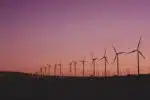
What are renewable energy programs?
To start, renewable energy itself comes from energy generators such as solar, wind, hydro, geothermal, and biomass energy – to name the most popular ones. Renewable energy programs are created federally, provincially, or otherwise to work on a way to better include or slowly make the change from fossil fuels and other such energy sources into renewable ones that we can reuse and help shrink the carbon footprint.
Emerging renewable energy programs face higher costs and risks, along with regulatory issues that other energy sectors have already established their businesses/systems/regulations and already have the machinery and areas in place. Canada has many renewable power programs starting and upcoming across the country, including Indigenous-run/for Indigenous communities such as the ones listed in our article here.
How renewable energy programs can help communities
Renewable energy programs in general are helpful for many aspects across the board, including creating little to no greenhouse gas emissions and reducing some types of air pollution. Diversifying energy supply and including green renewable energy diversifies supply, reduces dependence on importing or exporting finite fuels, creates economic development, jobs in manufacturing and otherwise, installations that better help communities and health, and more.
Programs work with industry key groups and other groups such as the government to encourage efficient renewable energy sources and technologies, such as combined power, heat, and electricity power from green renewable sources.
A look at the Indigenous energy programs in Canada
Currently within Canada as of 2023, there are over 197 renewable energy projects associated with Indigenous communities across the country. Few are controlled by Indigenous communities fully or mainly. Renewable energy and clean sources that are naturally derived and produced such as sun/solar, water, and wind are all renewable energy sources that can be replenished at a rate equal to or faster than the rate at which it is being used and consumed. Indigenous engagement in renewable energy projects is important for several factors, including economic development, climate change adaptation and self-determination as well.
The Cowessess Renewable Energy Storage Facility as an example, is one of the few that are First Nation owned as a renewable energy project and contributes to the economic sustainability of the country, as the facility harnesses energy from wind and solar power as a hybrid facility. The project was first developed by the Cowessess First Nation in 2013 and in partnership with the Saskatchewan Research Council, it provides enough power for 340 homes. SaskPower, the main power authority in Saskatchewan, is contracted to buy electricity from the project for 20 years, with the profits going to Cowessess First Nation. They support Indigenous businesses while training and hiring members of the First Nation to sustain the project as well.
Located in White River, Ontario, the Pic Mobert First Nation operates two generating stations that were constructed with band members, in partnership with Regional Power Incorporated. Pic Mobert First Nation owns 50% of the Gitchi Animki Hydroelectric Project. The project generates revenue that benefits the community and has been supplying energy to the province of Ontario’s power grid since 2016 – which is an impressive feat.
Indigenous-led and run renewable energy projects and programs, such as energy-efficient housing and larger scale infrastructures can contribute to climate change adaptation efforts as well as employing First Nations and other Indigenous community help. The ICE (Indigenous Clean Energy Network) states that energy efficiency is a catalyst for a future where clean and renewable energy is embraced and benefits everyone and Indigenous health. Financing the construction of energy-efficient homes and retrofitting older homes across the country to be greener and more efficient is proposed as a crucial component to both climate change adaptation and sustainable development in the long run, reducing harmful energy emissions and facilitating job creation across the board.
Federal/Provincial Organizations
In 2021, Canada’s Minister of Natural Resources announced that nearly $40.5 million in federal investments would go towards the Clarke Lake Geothermal Development Project, which is a wholly owned and Indigenous-led project that will develop one of the first commercially viable geothermal electricity production facilities in Canada. Being developed in the already existing Clarke Lake gas field in British Columbia, the project will use the mid-grade geothermal heat resources in its reservoir to reduce emissions by displacing fossil fuels and demonstrating the value and benefits of geothermal energy as a viable clean energy source and technology for rural, Indigenous, and northern communities. It will create jobs and other economic opportunities as well for local community members and will provide capacity building and training to workers from other industries to help them transition into the renewable energy sector.
Electricity will be the primary source of revenue, and although that is the case, additional revenue opportunities could include the sale of heat waste generated by the planet, excess heat could also power other activities in the local industries such as timber drying in the forestry sector and greenhouse food production in the agricultural fields, as well. The federal government is committed to making the country more green-energy friendly by 2030 and a leader in clean power, as outlined in this project and others they have stated.
The Clean Energy for Rural and Remote Communities Program is to improve access to federal funding and resources in Indigenous, rural, and remote communities for clean energy projects across Canada. On April 25th, 2022, an additional $300 million was announced, available through 2027, to further support and help clean energy projects. To learn more about which projects they are funding and how to apply for funding if you are interested as a project leader, you can do so here on the Government of Canada’s website.
Even more Federal climate change project information can be found here as well, including many Agriculture-clean projects and Agri-sector projects that benefit the sectors and Canadians.
- Agricultural Clean Technology Living Labs Program is establishing a strong Canada-wide network of regional collaborations made up of scientists, farmers, and other sectoral stakeholders with the objective to develop, validate, and share the beneficial management practices that best store carbon and mitigate climate change. This has been started since April 2021 and will continue until March 2031.
- Climate Change Preparedness in the North Program provides support to Indigenous and northern communities and governments to help them adapt to climate change impacts and funding supports projects such as the risk assessments and vulnerability hazards of climate change impacts. Development of hazard maps and adaptation plans and options and implementations of non-structural and structural measures are also included.
- Similar to the previous programs, the First Nation Adapt Program also provides funding to First Nation communities located below the 60th Parallel to assess options related to community infrastructure and disaster risks associated with climate change. Funding supports development and adaptation planning.
- REACHE (Northern Responsible Energy Approach for Community Heat and Electricity Program) funds renewable energy and energy efficiency projects and related capacity building and planning in the Yukon, Northwest Territories, Nunavut, Nunavik, and Nunatsiavut.
- The Climate Action and Awareness Fund supports Canadian-made projects that can create middle-class jobs for Canadians that work in science and technology fields, academia, and at the grassroots community level to help reduce greenhouse gas emissions across Canada. It is currently started and will run until 2025.
- Indigenous Guardians Pilot will invest up to $100 million over five years (from 2021 until 2026) to continue supporting and providing more support for Indigenous rights and responsibilities in protecting and conserving ecosystems, developing and maintaining sustainable economies and continuing the connections between the Canadian landscape and Indigenous cultures.
- NSCSF (Nature-Smart Climate Solutions Fund) has Indigenous partnerships that will be investing up to $36.9 million over the next ten years from 2021 until 2031 to support Indigenous-led on-the-ground activities focused on conservation, restoration, enhanced ecosystem management and planning, along with capacity building, including research to better help climate change and the environment across Canada.
- The Green and Inclusive Building program includes retrofits, repairs, upgrades and new builds that support jobs and local economic growth, contribute to climate objectives, and serve populations that have been particularly affected during the pandemic.
- The 2BT (2 Billion Trees) Program funds tree-planting activities across the supply chain (from sourcing seeds to monitoring trees) to achieve the program goal of planting 2 Billion trees by 2031. The Program has a $500,000,000 Indigenous stream and supports capacity building for Indigenous organizations and communities across Canada as well.
- FNIF (First Nation Infrastructure Fund) helps First Nations communities upgrade and increase public infrastructure to improve the quality of life and the environment in First Nation communities. FNIF targets infrastructure categories with long-standing community needs, including structural mitigation from natural hazards such as wildfires, floods, as well as including energy systems infrastructure that will help communities transition from fossil fuel to clean, reliable, and affordable energy systems such as hydroelectric, wind, and solar green and renewable energy.
The ICE (Indigenous Clean Energy) Network has been working with the Canadian government for years, to contribute to Canada’s clean energy opportunities and is a the forefront of Indigenous-led and proposed renewable energies across the country forging toward energy futures, benefitting infrastructure in renewable energy and lessening our collective carbon footprint away from finite fossil fuels.
In pan-Canadian collaboration, Indigenous participation in planning electricity futures and carbon price revenues more efficiently, reducing and changing the capital bottleneck for clean electricity that can help reduce costs for Canadians across the country, and helping Indigenous communities across the country as well as helping fund better futures.
Bioenergy has been an important fuel source for small-scale projects and renewable energy projects that can replace diesel-reliant off-grid Indigenous communities will help tremendously with the overall health and wellness of Indigenous peoples, along with Canada’s overall footprint and grid for electricity and renewable resources on Indigenous lands being better utilized and used safely and renewable.
The Clean energy in Indigenous, Remote, and Rural Communities Initiative was gifted the name Wah-ila-toos, a blend of Indigenous cultures and languages that reflects important relationships with Indigenous partners. It is the access to obtain Government of Canada funding and resources for clean energy initiatives for Indigenous, remote, and rural communities. Their mission is to provide funding for renewable energy and capacity-building projects and programs related to energy-efficient measures in Indigenous, rural, and remote communities across the entire country.
It was a name gifted by three Elders and Grandmothers following several months of discussions with the Government of Canada directly and with support from Indigenous climate leaders and the department’s Circle of Nations, which is a gathering place for employees to learn about Indigenous traditions, cultures, and the current realities that face them today.
Having an established and growing partnership between the government and Indigenous communities is important in the climate change steps forward and for improving the environmental impact that fossil fuels and other finite fuels, reducing the carbon footprint, and allowing help into Indigenous communities and rural ones that will benefit greatly from using green, renewable, and clean energy. Along with costs becoming more affordable, it allows the land to heal and creates jobs as well.
Many Indigenous communities, rural and remote especially, use diesel and fossil fuels for heat and power. Diesel is a well-known energy source, however, it can be harmful and negatively impact the communities and the environment. Transitioning to clean power continues to be an important part as both parties work towards reconciliation. An additional $300 million is available until 2027 for clean energy projects to be granted help from the government directly to help support and fund Indigenous-led projects and programs.











